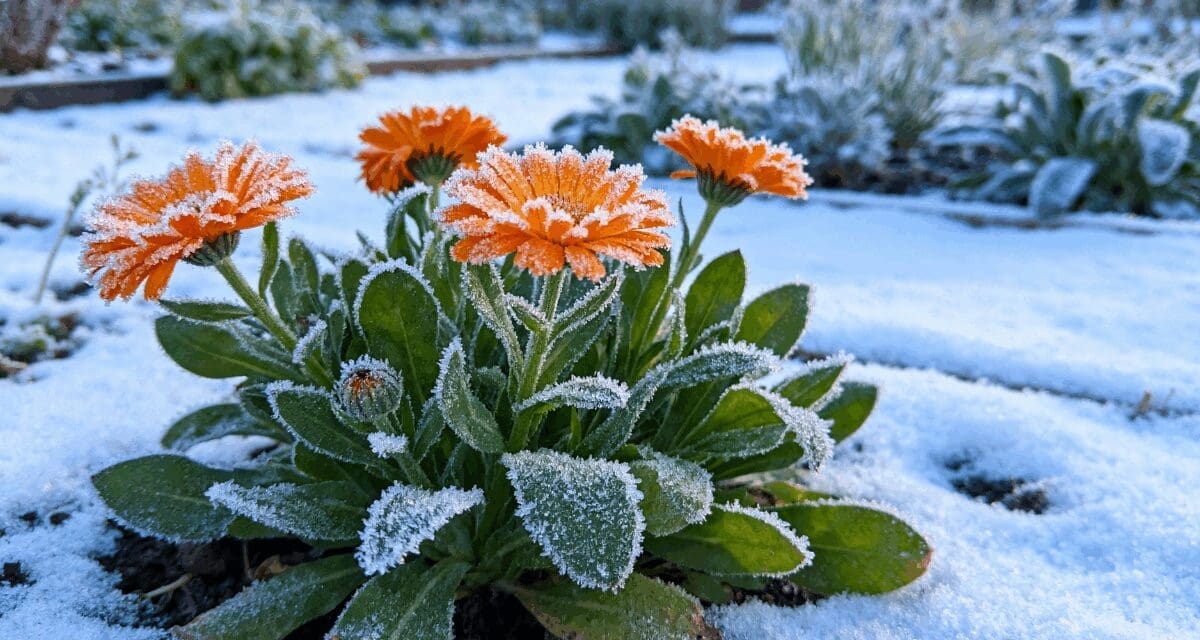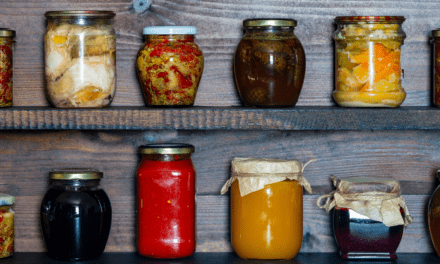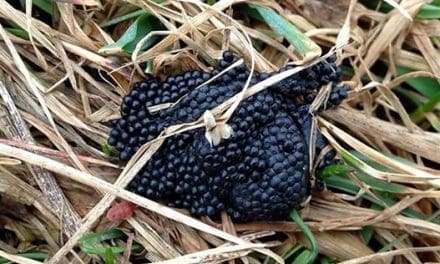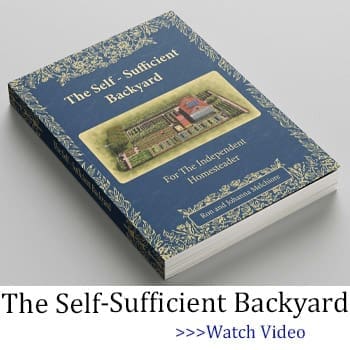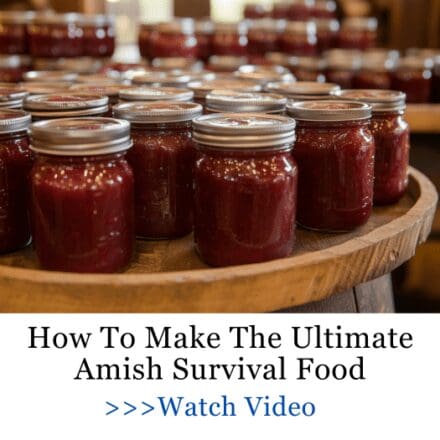As the frosts and freezes of late Autumn approach, it’s time to think about what you can save and salvage from your yards and gardens that have medicinal value. And this isn’t just about herbs; there are many plants and flowers that have medicinal benefits.
We’re going to identify some key plants you probably have in your yard that have medicinal value. We’ll cover what and how to harvest them; how to preserve them and their practical medicinal uses.
What are We Harvesting?
Certain parts of medicinal plants carry the compounds that provide varying levels of relief for certain conditions. This could be the leaves, flowers, seeds or the roots. We’ll be specific but the leaves and the flowers are the most sensitive to cold weather. The good news about roots is they’re good to go anytime as long as the ground is not frozen.
Basic Preservation Methods
In most instances the medicinal plants we harvest will be dried. This can be done with a food dehydrator or a hanging net dryer. If drying in the net make sure you take it indoors if the weather gets below freezing. The basement, attic or garage are possibilities with the attic probably being the best location.
The harvested and dried plants can be stored in zip lock bags, mason jars or spice jars if reduced to a powder. Always store in a cool, dark place.
Let’s get started:
- Aloe
Aloe Vera has been used for centuries across cultures as a topical treatment for skin irritations, burns and when ingested – actually acts as an aid to digestion. They are members of the cactus family, and the interior of the aloe shoots or leaves are densely packed with a gelatinous liquid that can be damaged by freezing.
Cut off the thick shooting leaves at the base and carefully cut away and peel the skin off. Strain the gel through a strainer into a mason jar and put on the lid. Store in a cool, dark place and use for ski irritations when needed. If you plan on ingesting it for indigestion, refrigerate the jar. It should be good for up to a year.
- Echinacea
Echinacea or “Purple Cone Flower” is another ancient champion of medicinal practices. It’s the roots that deliver the medicinal benefits in addition to the leaves and flowers. As long as the ground is not frozen you can harvest the roots late into fall and early winter.
It’s a proven immune system booster helping to fight off colds and infections. Think of it as Vitamin C with a flower. It’s another medicinal plant that has been used for centuries particularly by native people and tribes.
Parts of the plant can be used to make a tea; a tincture made with alcohol or converted to a powder and taken in capsules. The basic preparation involves peeling and drying the roots, or the whole leaves or flowers. If making a tea, just drop the dried parts into a cup and add boiling water and let steep. You can sweeten it with honey if you want.
To make a tincture, fill a jar halfway with chopped echinacea root and fill with vodka. Store in a dark place for 4 to 6 weeks shaking daily. Take 1 to 2 dropperfuls up to three times a day. It has been shown to be stronger and longer lasting than an echinacea tea.
To make a powder, drop the dried parts of the flower or roots or leaves or all three into a coffee grinder or food processor and grind until it is reduced to a powder. Scoop the powder into the capsules. You could also just add the powder to water or incorporate it into a smoothie.
A common caution is to not take echinacea for more than 10 days.
- Chamomile
Chamomile flowers are the champions here. They are a natural way to relax, promote sleep, reduces anxiety and are another digestive aid. They are usually dried and used to make a tea. Fill a cup 1/3 full with the flowers and add boiling water. Let steep for 5 minutes and filter out the flowers and drink. Add honey for sweetening.
- Calendula
Calendula has unique antiseptic properties and is another ancient cure used by cultures around the world. It has anti-inflammatory properties, soothes the skin and is effective at treating and healing wounds due to its antimicrobial properties. The flowers are the primary carrier of the compounds for medicinal uses.
Calendula can be used to make a tincture, salve, tea, an infused oil and as a poultice.
To make a tincture, fill a jar halfway with dried Calendula leaves and fill with vodka. Store in a dark place for 4 to 6 weeks shaking daily. Apply 2 to 3 drops to areas of skin irritation or add a few drops to water and drink. A food dehydrator or hanging net dryer can be used to dry the flowers.
To make a tea, steep 2 teaspoons of dried petals in boiling water for 10 minutes and drink. Add honey to sweeten. You can also use it to wash external skin irritations.
To make an infused oil, fill a jar with dried calendula flower tops and then fill the jar with olive oil and let sit in a dark place for 4 to 6 weeks. Apply it directly to the skin to treat skin irritations and wounds or use to make a lotion or salve. To make a salve just add equal parts bees wax and infused Calendula oil and blend. (melt the bees wax first). Apply to skin to treat wounds, cracked and dried skin, diaper rash and eczema. You can also substitute Vaseline for the beeswax.
To make a Calendula poultice, soak a cloth in calendula tea and then add some fresh petals to the cloth. Fold the cloth and apply to sprains, bruises or inflamed areas to reduce swelling and pain.
- Garlic
Garlic has surprising and potent medicinal properties. It has been proven to lower blood pressure, reduce cholesterol and improve circulation by enhancing blood flow. This is another plant that can be harvested into winter as long as the ground is not frozen.
It has also been shown to support the immune system; has antioxidant and anti-inflammatory properties and some studies have indicated it may help prevent certain types of cancer. It has also been shown to detoxify the liver and support overall gut health aiding digestion.
Finally, it has been used as a treatment for fungal infections. Wow. Who would have guessed garlic was so good for you?
Common preparation methods include:
Raw garlic is the easiest way to enjoy its medicinal value. Dice it and add it to recipes, salads, sauces and soups or spread it onto bread with other meat or cheese for a sandwich.
Garlic oil is nothing more than diced garlic that has been allowed to sit in a jar or olive oil for 2 to 3 weeks. Add 3 tablespoons of minced garlic to a pint mason jar and fill with the olive oil and cap it. Store in the pantry.
Garlic tea is made by adding 2 teaspoons of diced garlic to a cup and filling with boiling water. Let steep for 5 minutes. Add honey if you like.
Powdered in capsules. Crush the cloves and dehydrate in a dehydrator. This should take 4 to 6 days. Do it in the garage or your house will smell like garlic. When dried, grind in a food processor or coffee grinder to a powder and scoop into capsules. Take twice a day.
- Elderberry
Elderberry is another plant that supports the immune system and helps with the symptoms from a cold or flu. It is antioxidant rich and has anti-inflammatory properties. The berries are the heroes, and the treatment is taken as a tea, syrup, tincture or capsules.
To make Elderberry syrup, simmer dried elderberries with water, cinnamon, cloves and honey. Dry the berries in the food dehydrator still on the stem and add enough honey to create a syrup consistency.
To make Elderberry tea, add a tablespoon of dried berries to a cup and top with boiling water. Let steep for 10 minutes. Add honey to sweeten.
To make an Elderberry tincture, fill a 1-pint mason jar halfway with dried elderberries and fill with vodka. Let sit for 4 to 6 weeks shaking daily. Take 1 to 2 dropperfuls up to 3 times a day or add to water.
To make Elderberry capsules, grind dried elderberries in a food processor until powdered and scoop into capsules. Take up to 3 times a day.
- Lavender
Lavender is another relaxing and soothing medicinal plant. It has been used to promote sleep, calm the nerves and relieve anxiety, and even as a treatment for minor skin irritations like rashes and sunburn. It also is a pain reducer and has anti-inflammatory properties. It can be used as a tea, a bath soak, an essential oil and a salve.
To make Lavender tea,add 2 tablespoons of dried Lavender flowers to a cup and add boiling water. Let steep for 5 minutes and add honey to sweeten. Dry the flowers either in the hanging net or a dehydrator.
For a bath soak, add a cup of dried Lavender flowers to the bathtub and fill the tub with hot water.
To make an essential oil, add 4 tablespoons of dried Lavender flowers to a 1-pint mason jar and add olive oil. Let sit in a dark place for two weeks and apply topically to the skin.
To make a Lavender salve, add equal parts melted beeswax or Vaseline to the Lavender essential oil and blend. Apply to skin irritations.
There are Many More
What we’ve covered here are some basic preparations that can be applied to most any medicinal plant. What’s important is to dry the parts of the plant that have the medicinal compounds and then use either as a tea, tincture, essential oil, salve, or powdered in capsules. Here are other possibilities that you can apply these preparation processes to:
- Ginger Root: Relieves inflammation, motion sickness, and has anti-inflammatory properties. Typically prepared as a tea or a tincture.
Sometimes used in a poultice. - Turmeric Root: Has antioxidant properties, supports skin and joint health, and has anti-inflammatory properties. Usually prepared as a powder from the dried root and stored in a spice jar or capsules.
- John’s Wort: A relaxant is often used for mood regulation and mild depression and anxiety. Typically taken as a tea.
- Mint: Often used to treat headaches, indigestion and bloating. Typically taken as a tea or tincture.
There are many more plants that have surprising medicinal properties. Take the time to research them on the Internet or buy one of the many books about medicinal plants. You may be surprised how many plants in your yard and garden can help you treat numerous conditions. What’s important is to think about it now before the frosts and freezes of winter take their toll.
You may also like: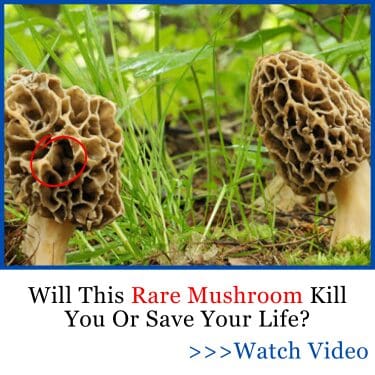
Foraging In Autumn: Edible And Medicinal Plants You Need To Forage Before They’re Gone
Medicinal Plants and Remedies You’ll Get for Free at Nature’s Pharmacy (Video)
10 Medicinal Plants You Can Find On Your Homestead
The Indispensable Medicinal Garden Every Homestead Should Have

